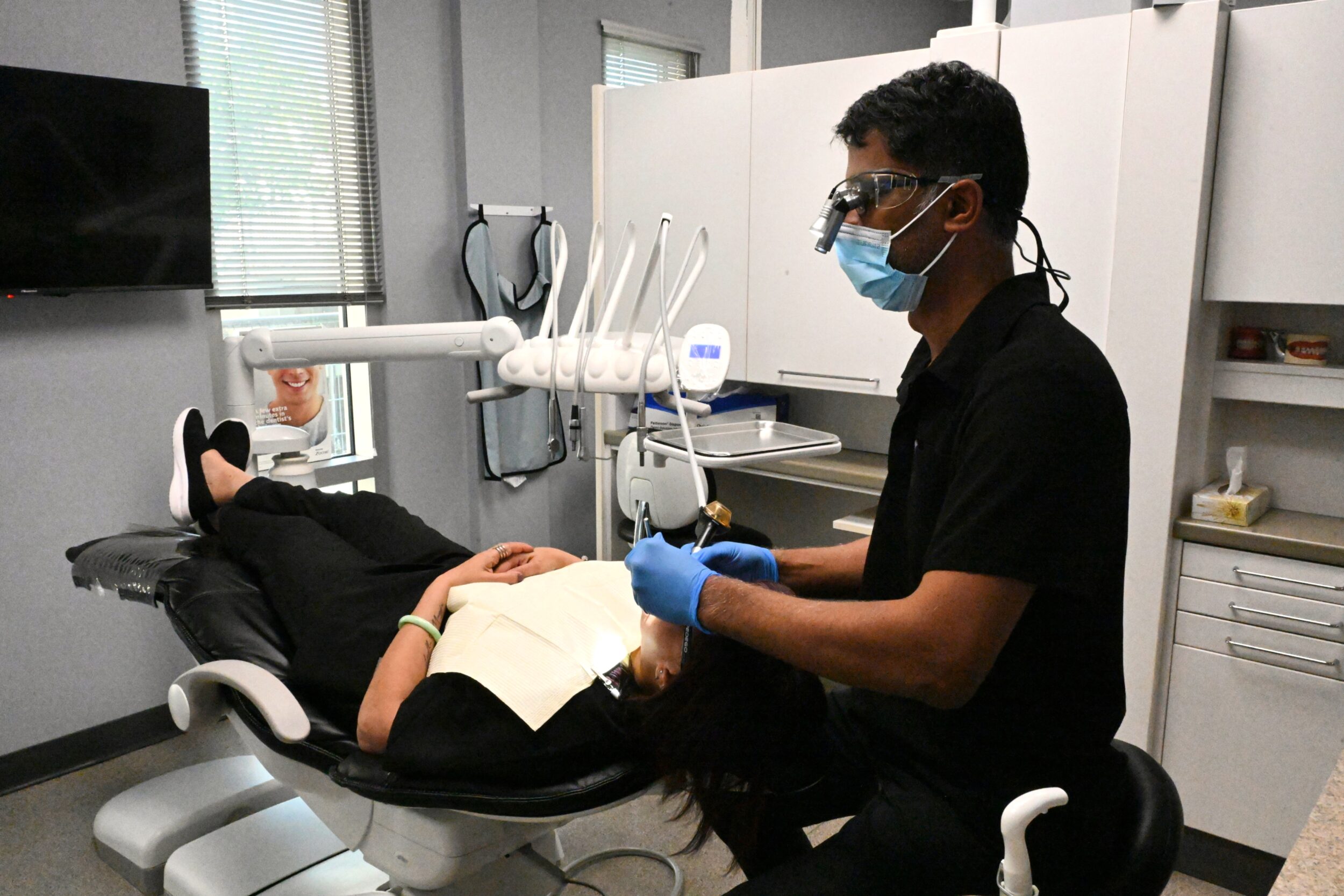Digital X-Rays In Calgary, AB
As we all know, digital radiography (digital x-rays) is one of the most advanced technologies used to take dental x-rays. Instead of using x-ray film to capture the image, this technique uses an electronic sensor that captures the digital image on a computer and then stores it on a hard drive. It is possible to view and enlarge this image in real time, making it easier for dentists and dental hygienists to detect problems. The digital x-ray reduces the amount of radiation 80-90% compared to traditional dental x-rays that already expose the patient to a low level of radiation.

As essential, preventative, and diagnostic tools, dental x-rays are essential and provide the dentist with valuable information that is not visible during a normal dental examination. In order to detect hidden dental abnormalities safely and accurately, dentists and dental hygienists use this information in order to implement an accurate treatment plan. It is possible that problem areas may go undetected without the use of x-rays.
The following information may be revealed by dental x-rays:
- Cysts or abscesses.
- Loss of bone.
- Tumors that are cancerous and non-cancerous.
- Decay between the teeth.
- Developmental abnormalities.
- Poor tooth and root positions.
- Dental problems that occur inside a tooth or below the gum line.
Early detection and treatment of dental problems may save you time, money, unnecessary discomfort, and your teeth.
Is it safe to take dental x-rays?
As a result of the natural radiation present in our environment, we are all exposed to it every day. The effectiveness of digital x-rays, in comparison to traditional dental X-rays, can be attributed to the lower level of radiation they produce. Besides the fact that digital x-rays are better for the health and safety of the patient, they are also faster and more comfortable to take, which means you will spend less time in the dental office as a result. Due to the fact that the digital image is captured electronically, there is no need to develop x-rays, which means that harmful waste and chemicals will not be dumped into the environment, since the digital image is captured electronically.
The use of digital x-rays produces a very low level of radiation and is considered very safe. However, dentists still take precautions to limit the patient’s exposure to radiation even though digital x-rays produce such a low level of radiation. There are a variety of precautions that are taken to make sure the body is protected during surgery, including only taking x-rays that are necessary and wearing lead apron shields.
Is there a recommended frequency for taking dental x-rays?
The requirement for dental x-rays is determined by the individual dental health needs of each patient. Depending on the information you provide to your dentist or oral hygienist, X-rays may be recommended based upon your dental history, a dental exam, the symptoms you are experiencing, your age, and your risk of developing certain diseases.
In the case of a new patient, a full mouth series of dental x-rays is recommended. Usually, a full series of photographs lasts three to five years. At recall (check-up) appointments, bite-wing x-rays (x-rays of the top and bottom teeth biting together) are taken, and these are recommended once or twice a year to detect any problems with your teeth that may develop in the future.